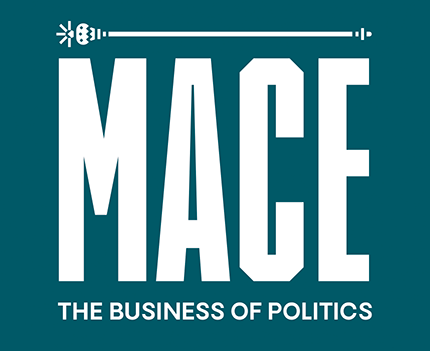Mace sat down with Professor Asif Ahmed, Executive Chairman and Founder of MirZyme, a UK-based biopharmaceutical biotech company that focuses on the development and commercialisation of tailored therapeutics to prevent pre-eclampsia, to learn more about how he is leading the femtech revolution.
Mace: What is pre-eclampsia, how does it occur and whom does it affect?
AA: Let me start with a personal story. A bereaved mother and retired biochemist Dr Carolyn Fahm recalls losing her child to pre-eclampsia decades ago as if it was yesterday. She told me: “I’ve been obsessed with pre-eclampsia ever since I lost my child,” she said. “At the time, I was far too ill to leave the hospital and attend to my son’s funeral arrangements. Things like that leave emotional scars. They change us physically, too: The hypertension has left visibly distended cranial blood vessels that I have seen on one of my CT scans done as part of an epilepsy neurology workup. Like Covid-19, pre-eclampsia occurs without any forewarning, despite being a life changing and potentially deadly illness. So antenatal education is of such great importance. But having the means to test for pre-eclampsia and then to have a therapeutic means to reverse the biochemical pathway that leads to the clinical syndrome means everything to me.”
Pre-eclampsia is defined by high blood pressure developing halfway through pregnancy and can be life-threatening for moms and babies. Not everyone experiences the symptoms of pre-eclampsia, so it’s important to get regular check-ups. There is a significant cost associated with the increased testing and monitoring of pregnant women at risk of developing pre-eclampsia, but the cost of not doing anything is a lot higher.
What are the risk factors contributing to the development of pre-eclampsia?
There are many risk factors that predispose one to pre-eclampsia. These include chronic high blood pressure, kidney disease, obesity, belonging to certain ethnic groups, as well as family history. Women older than 35 years are at 4.5 times higher risk than 25 years old. African Americans are also more likely to develop pre-eclampsia compared to their white counterparts. According to the World Health Organization, among women who have had pre-eclampsia, about 20% to 40% of their daughters and 11% to 37% of their sisters also will get the disorder. Women who had pre-eclampsia in a previous pregnancy are seven times more likely to develop pre-eclampsia in a later pregnancy. Women with gestational diabetes, migraines and rheumatoid arthritis are also at higher risk.
Delivery typically resolves the symptoms of pre-eclampsia, but that often means inducing labour with all the risks to the child usually associated with preterm birth. Moreover, mothers who have had pre-eclampsia should be aware of an increased probability of future cardiovascular issues. They can also develop a postpartum pre-eclampsia, a rare but serious condition that may develop up to six weeks after giving birth.
There are no accurate diagnostics to predict pre-eclampsia and no approved pharmacological agents available to treat or prevent it. There’s clearly an unmet medical need.
What are the health and developmental consequences as a result of pre-eclampsia for surviving children?
Each year, pre-eclampsia is responsible for over half a million baby deaths worldwide. It also accounts for two in five premature births delivered before the 35th week of gestation and 12% to 25% of fetal growth restricted (undersized) babies. The complications associated with prematurity are substantial and include neonatal deaths and serious long-term neonatal morbidity. Offspring born to a pre-eclamptic mother has an increased risk of developing endocrine, metabolic, and nutritional disorders as well as diseases of the blood and blood forming organs with longer hospitalisation compared to offspring born to mothers without pre-eclampsia.
Pre-eclampsia can predispose offspring born to pre-eclamptic mothers to cardiovascular complications later in life, as they seem to have a more adverse cardiovascular risk profile in young adulthood than offspring of normotensive pregnancies. In addition, offspring of pre-eclampsia pregnancies appear to be at higher risk for cognitive impairment (learning difficulties), altering cerebral vascular and neuroanatomy during development (compromised brain development) compared to offspring from uncomplicated pregnancies.
How does surviving pre-eclampsia affect mothers?
Pre-eclampsia has a detrimental effect on pregnant women and their families. Women with a history of pre-eclampsia are disproportionately affected by mental health disorders. One in five women with pre-eclampsia or eclampsia experience postpartum depression and the magnitude increases with the severity of the disease condition. Pre-eclampsia also increases the chance of childhood mental disorders in offspring.
There is also a huge cost to our society; The direct worldwide cost burden of pre-eclampsia is over USD $100 billion. However, the indirect cost could be significantly higher as pre-eclampsia causes long-term health complications both for the mother and the baby. Cost of the burden of pre-eclampsia represents one-third of the total cost of obstetric care in the United States. Women in the US can be billed over $600,000 USD if their infant is born around 24 weeks of gestation. If they are not covered by insurance, this money will have to be paid out of pocket causing many problems, emotionally, mentally as well as financially.
Is there any treatment for pre-eclampsia? What toolboxes do women have available today to prevent pre-term birth?
There are no approved treatments available for pre-eclampsia. Current management involves life-style changes and use of blood pressure medications, which have a marginal impact on organ preservation. If symptoms worsen, delivery of the fetus is the only option available to pregnant women the obstetrician regardless of the pregnant woman’s gestational age. Blood pressure lowering (anti-hypertensive) drugs appear to offer some relief from hypertension that is a recognised characteristic of pre-eclampsia. However, the risk of pre-eclampsia is not reduced with anti-hypertensive drugs. Women who experience pre-eclampsia have a 2.2-fold greater risk of being hospitalised due to deep vein thrombosis. This hyperactivity of the clotting system observed in some women with pre-eclampsia led U.K. NICE to recommend 75mg of aspirin (low-dose aspirin) daily from 12 weeks of gestation for women at high risk of developing pre-eclampsia due to chronic hypertension, hypertensive disease during previous pregnancy, chronic kidney disease, autoimmune disease, or diabetes.
In addition, women with more than one moderate risk factor for pre-eclampsia such as first pregnancy, age above 35 years, pregnancy interval of more than 10 years or a family history of pre-eclampsia should also be given low-dose aspirin. This is the only intervention so far to be given to women with high risk of developing pre-eclampsia; However, suppressing the symptoms with aspirin cannot cure pre-eclampsia or prevent it. There are no approved pharmacological agents available to prevent pre-eclampsia or foetal growth restriction or pre-term birth.
There is a significant body of research pointing to the link between giving birth prematurely and the mother’s mental health, particularly stress and anxiety. Does high blood pressure play a role, or are there other factors?
There is strong evidence that before birth (antenatal) distress increases the likelihood of preterm birth. According to a systematic review of a large number of studies, the effects of pregnancy distress are associated with spontaneous preterm birth. In a landmark population-based study, researchers reported that mothers with no pre-eclampsia but a preterm delivery, experienced about three-fold increased risk of death from cardiovascular disease compared with controls over a 25-year follow-up period. When women with pre-eclampsia were divided into two groups based on whether the mother delivered after 37 weeks (term pregnancy) or before 37 weeks (preterm) of gestation, women with term pre-eclampsia were at a 1.65-fold increased risk of cardiovascular death compared with women without pre-eclampsia. Women with preterm delivery and pre-eclampsia experienced an over eight-fold higher risk of death from cardiovascular disease, independent of lifestyle or other socioeconomic variations. So, the key is to develop drugs to prevent pre-eclampsia from happening and in doing so we will create a healthier and highly productive society with an increased life expectancy.
Mental health disorders such as anxiety, depression and stress in pregnancy are risk factors for adverse outcomes for mothers and children. Anxiety in pregnancy is associated with shorter gestation and therefore preterm delivery – and it has adverse implications for fetal neurodevelopment and child outcomes. For example, women who experience major life events are almost twice as likely to give birth to a premature baby. In addition, women with exposure to racism and those who develop depressive symptoms during pregnancy are also at higher risk of giving birth to premature babies.
Sadly, there are no drugs available to prevent or treat premature birth and nor are there drugs to prevent racism. Targeting associated factors will not solve the problem of preterm delivery, but as our understanding of the disease pathology increases, new medicines targeting molecular pathways will eventually solve this problem.
Some research examines the correlation between preterm birth and oral health. A recent pregnancy study conducted in Malawi, showed that chewing a stick of sugar free gum per day may reduce the risk of preterm birth by 25% by lowering the incidence of periodontitis. How helpful is this new research?
Unfortunately, although improving mothers’ dental hygiene, diets and lifestyles may help reduce the risk of preterm birth, such actions will not prevent pre-eclampsia. A solution requires a detailed understanding of underlying pathophysiology of the disease. Steve Jobs once said, “You can’t connect the dots looking forward; you can only connect them looking backwards”. We have now connected the dots, identified the roadmap of pre-eclampsia and undersized babies, and we are using state-of-the-art technology to prevent them by identifying targeted therapies.
MirZyme is at the forefront of femtech innovation in developing a solution to improve prenatal health and prevent pre-term birth. How can Mirzyme make pre-eclampsia history?
At the dawn of the femtech evolution, the UK is an ideal place to drive innovation in this sector by ensuring companies and investors are incentivised in this space. A scheme of no capital gain tax for investors investing in unmet medical need for pregnancy complications should be introduced. A UK policy commission report into maternal drug development has set out a vision to incentivise industry to develop pregnancy-specific medicines.
This commission on maternal drug development launched its report in the House of Commons in May – Healthy Mum, Healthy Baby, Healthy Future: The Case for UK Leadership in the Development of Safe, Effective and Accessible Medicines for Use in Pregnancy. It recognised a ‘need to explore and implement economic incentives, such as the extension of a medicine’s licensing patents. Raising awareness and a clear message is vital in driving women’s health innovation forward. Women planning to become pregnant and become mothers must be aware of all the risks and complications they may face. The public should be aware of the detrimental effect that pregnancy complications and the lack of preventative measures have on people and society. Awareness is also key amongst investors to ensure that they are aware of the ‘white space’ opportunities available in the sector and long-term importance of investing in companies focused on women’s health, specifically in pregnancy complications that affect women and families.
We are leading the charge for new medicines in pre-eclampsia. What makes the science behind MirZyme so groundbreaking?
Scientists at MirZyme have shown that pre-eclampsia is caused during pregnancy due to a defect in a protective enzyme and with a rise in a culprit protein called soluble Flt-1 in the mother’s circulation.
We developed a genetic model, that identifies signs of pre-eclampsia, and successfully demonstrated that the factors responsible can be consstrained using a designer molecule, hydrogen sulfide-releasing aspirin (supercharged aspirin) that suppresses hypertension, improves kidney function and prevents poor fetal outcomes. This provides proof of principle and opens the door to exciting new therapies including synthetic biogenics.
We have developed accurate diagnostics and therapeutics to predict and prevent pre-eclampsia. MirZyme diagnostic is a companion diagnostic currently in human clinical evaluation that can accurately identify pregnant patients who will go on to develop the disease. This is a game changer in obstetric care when combined with the therapeutics that MirZyme is developing.
MirZyme’s targeted therapeutic with a companion diagnostic approach targets specific pathways within the disease pathophysiology. The prognostic biomarkers will allow the clinician to assess the effectiveness of this therapy in the treatment group. Not only will MirZyme be the first to offer a cure for pre-eclampsia, but also the only company to offer a stratified targeted therapeutic with an additional companion diagnostic tool and a means to measure effectiveness using biomarkers allowing for easy risk stratification of pre-eclampsia during pregnancy. MirZyme’s patented microRNA technology offers a direct target for limiting the rise of the culprit protein sFlt-1.
At MirZyme we are using two different approaches to prevent pre-eclampsia: small molecules and synthetic biogenics. The basic research, discovery of the medicine and preclinical development tests have been completed for both the small molecules and the biogenics. We are planning to conduct clinical development for drug candidates for pre-eclampsia after it has raised its first institutional investment.
As Elon Musk recently said, “I do whatever I think is most likely to ensure that the future is good for humanity”. Likewise, MirZyme’s patents and papers are paving the way for a safe, easily accessible, and effective treatment against pre-eclampsia. Our aim is to help create a world free of chronic diseases by stopping them before they start in utero. We will do this with the One Test, One Pill and save the lives of mother and baby. One Test, One Pill, Save Two lives. Our team at MirZyme knows that this is not just a tagline, and that with sufficient resources we will make pre-eclampsia history. Discovery is a step into the unknown to build beyond the known.
When the resources are provided, science and innovation will change our world for the better.
Prof. Asif Ahmed is Founder & CEO Executive Chairman of MirZyme


